Welcome to Saturday Sparks! This week, we’re stepping onto the court for a high-energy game that tests agility, focus, and endurance, racquetball. Fast-paced and full of action, this indoor sport offers both a mental and physical challenge, making it an ideal way to stay active year-round.


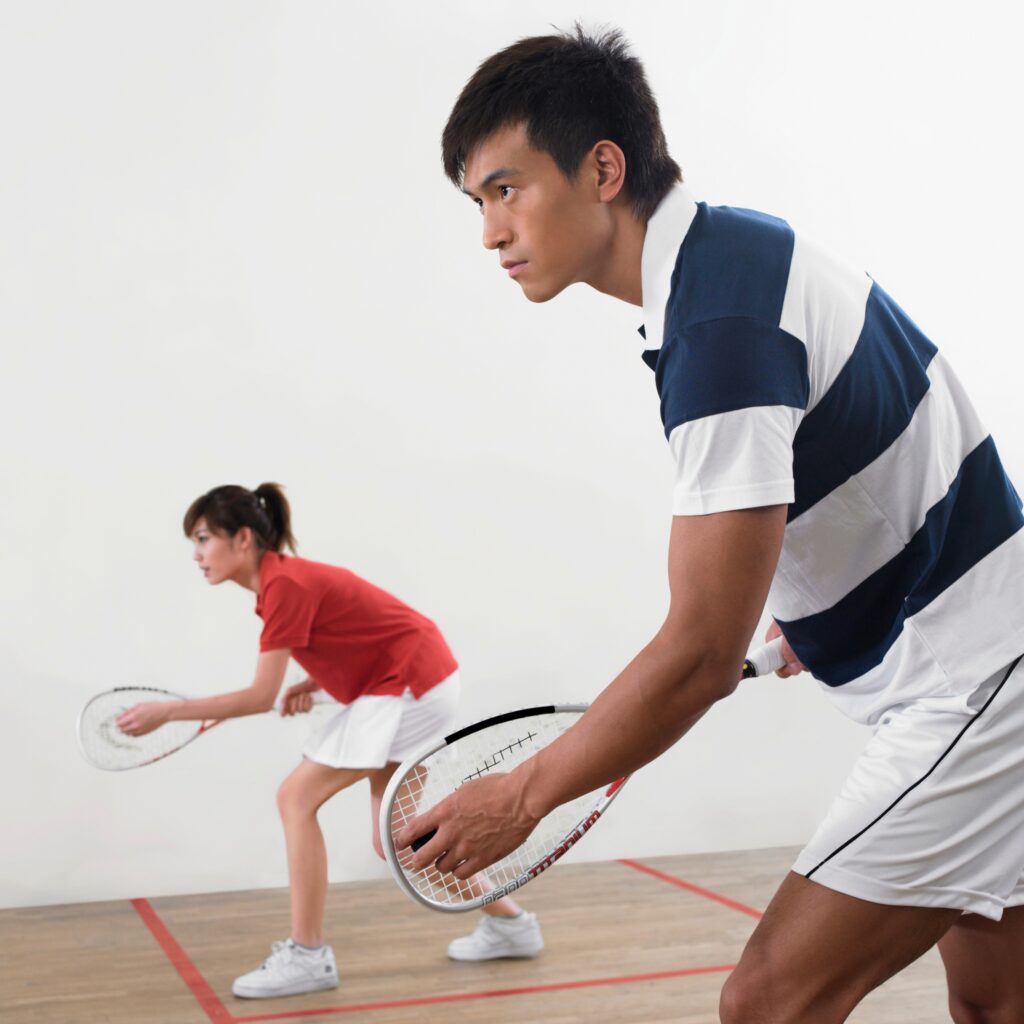
There’s something immediately engaging about the sound of the ball echoing off the walls, a quick rally, a burst of movement, and the satisfaction of a clean hit. Racquetball keeps you alert and in motion from the very first serve, providing a complete workout that strengthens the body and sharpens the mind.
Invented in the 1950s by Joseph Sobek, racquetball was designed as a faster, more dynamic version of handball and squash. It quickly gained popularity in gyms and recreation centers for its accessibility, requiring minimal equipment and space. Decades later, it remains a go-to sport for those seeking a fun, competitive, and efficient workout in a controlled environment.
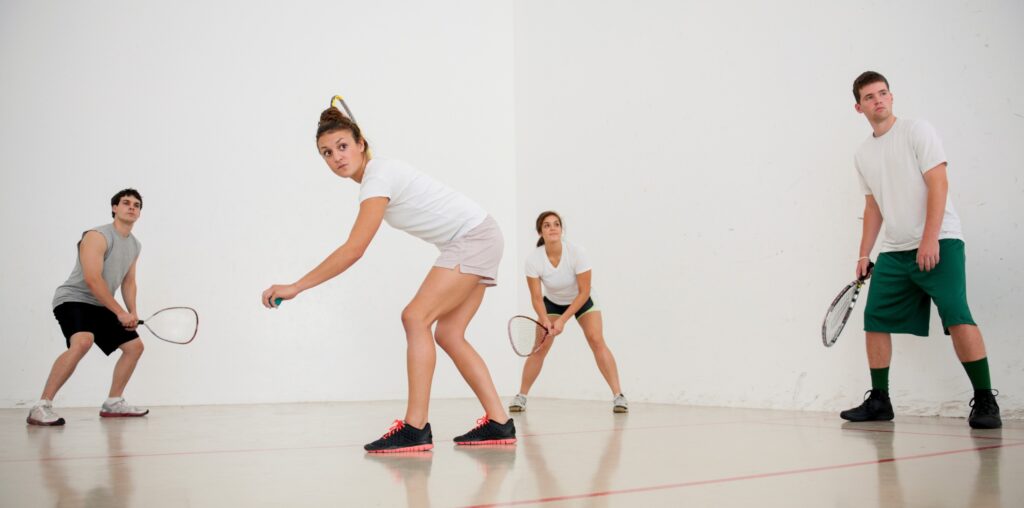
Whether you’re new to the game or returning after years away, racquetball offers a rare mix of speed, strategy, and satisfaction. It’s as much about anticipation and precision as it is about power, and every rally offers an opportunity to challenge yourself in new ways.
DESCRIPTION
At its core, racquetball is an indoor court sport played with a hollow rubber ball and a stringed racquet.
The game takes place on a fully enclosed rectangular court measuring 20 feet wide, 40 feet long, and 20 feet high, with all six surfaces, walls, floor, and ceiling, in play.
The object is to serve or return the ball in a way that the opponent cannot reach it before it bounces twice on the floor.
Players strike the ball alternately, using walls and angles to keep rallies unpredictable.
Unlike tennis or squash, the ball can rebound off any combination of surfaces, requiring players to think quickly and adjust positioning constantly.
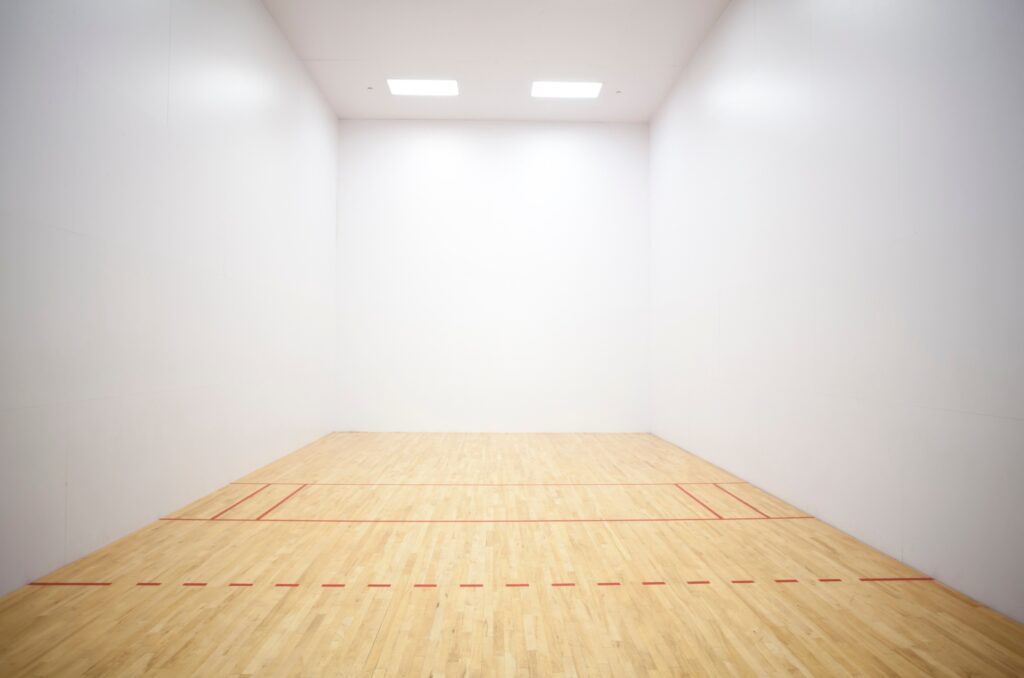
Matches are typically played to 15 points, and scoring is limited to the serving player, though rally scoring formats are also used in some clubs.

A standard racquetball racquet is shorter and wider than a tennis racquet, typically 22 inches in length, with a teardrop-shaped frame for better maneuverability in tight spaces.
The ball itself is made of durable rubber and comes in several colors to match visibility conditions; blue for recreational play, green or purple for competitive play, and black for outdoor courts.
Players wear eye protection as a safety requirement since the ball can travel at speeds exceeding 150 miles per hour.
Footwear and grip are essential in racquetball. Non-marking court shoes provide the traction needed for quick lateral movement and sudden stops without damaging the floor.
Proper stance and balance are key, most players maintain a low center of gravity, keeping knees bent and weight forward to react quickly to fast rebounds.
Racquetball’s appeal lies in its dynamic mix of aerobic exercise and strategy. Players must constantly analyze angles, anticipate rebounds, and adjust to unpredictable ball trajectories.

The enclosed court environment creates a uniquely immersive experience, fast, focused, and endlessly engaging. It’s a sport that challenges both reflexes and reasoning, offering as much mental stimulation as physical exertion.
Benefits of Racquetball
Racquetball provides a comprehensive full-body workout that builds endurance, strength, and agility. The constant movement required during rallies engages nearly every muscle group, the legs drive explosive sprints, the core stabilizes during twists and turns, and the shoulders and arms generate controlled power for each shot.
This combination of movement patterns improves cardiovascular health while increasing flexibility and balance. Over time, players develop not just physical stamina but refined coordination that carries into other activities.
It sharpens hand-eye coordination and reaction speed. Because the ball can rebound off any wall in unpredictable ways, players must track its motion instantly and adjust their body position with precision.
Every rally trains quick visual processing and fine motor control, enhancing reflexes and timing. These benefits extend beyond the court, improved spatial awareness and reaction speed can support better performance in other sports and even daily tasks requiring focus and coordination.
Racquetball develops mental agility and decision-making under pressure. The confined court space demands constant strategic thinking, predicting angles, anticipating opponents’ returns, and deciding between offensive and defensive plays in split seconds.
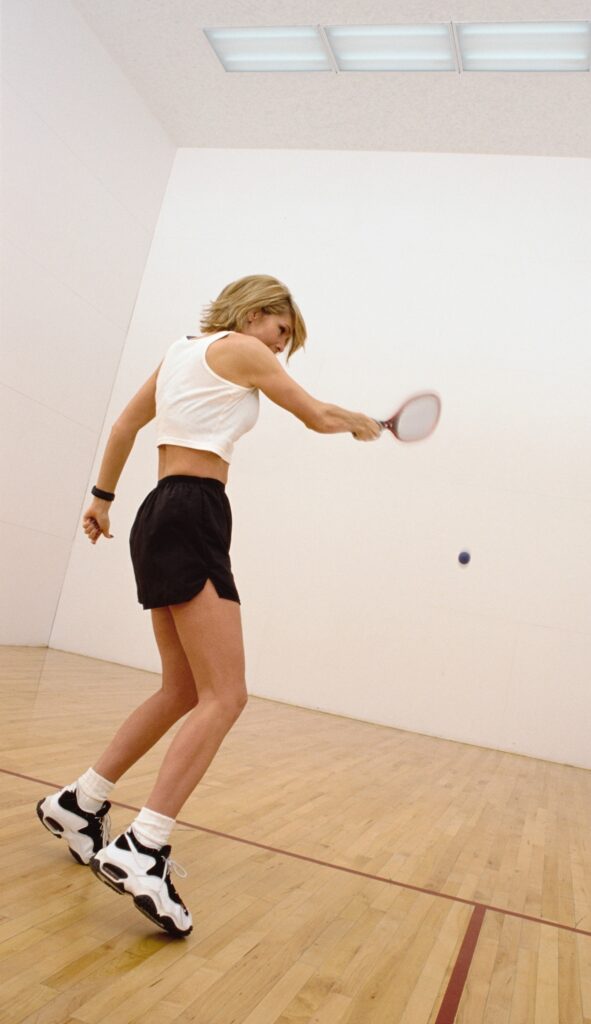
This blend of physical and cognitive engagement strengthens mental focus, pattern recognition, and tactical planning. Many players describe racquetball as a form of “mental chess in motion,” where each move requires calculation and adaptability.
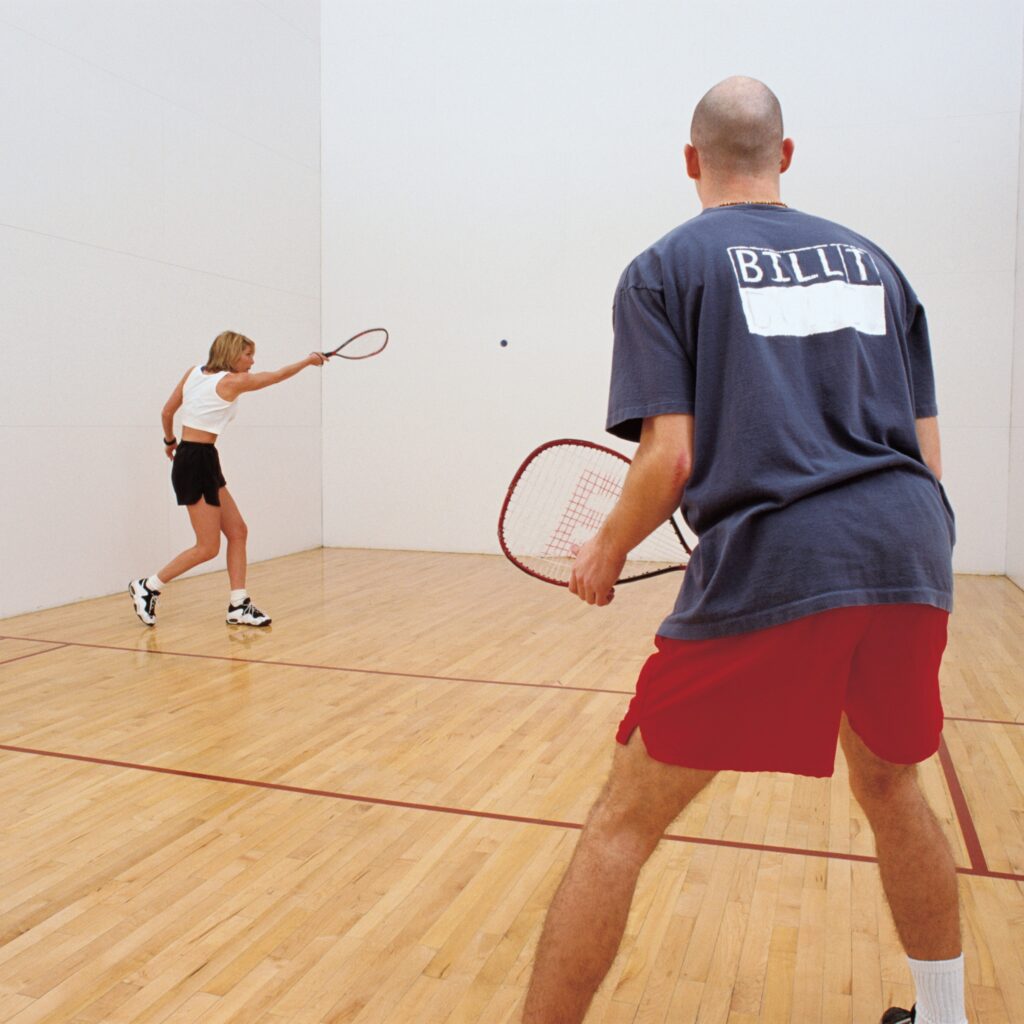
It’s an excellent outlet for stress relief and emotional well-being. The high-energy pace encourages full physical engagement, channeling tension into movement and rhythm.
The adrenaline from fast-paced play, paired with the endorphin release from intense activity, leaves players feeling recharged and clear-minded.
The immersive nature of the game makes it difficult to dwell on outside distractions, promoting mindfulness through focus and action.
Racquetball fosters social connection and friendly competition. Whether playing singles or doubles, it’s a sport that naturally builds camaraderie. Regular matches at local clubs or recreation centers often turn into lasting friendships built around shared enthusiasm and mutual improvement. The community aspect provides motivation to stay active, while friendly rivalries keep the game engaging and fun.
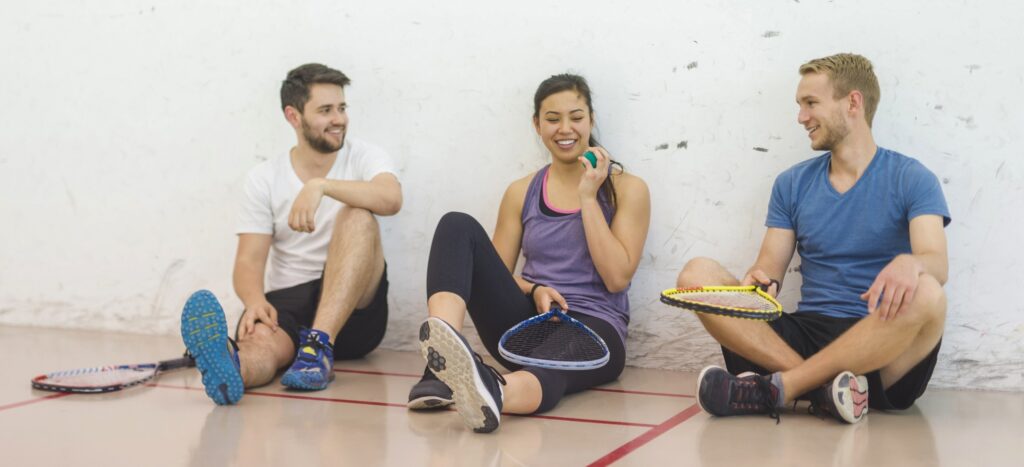
It offers accessibility across ages and fitness levels. Racquetball can be played recreationally or competitively, at a pace that suits the player. Courts are available year-round, making it a practical indoor activity for all seasons. Because players control the intensity of their sessions, it’s equally suited for beginners learning the basics or experienced athletes seeking high-intensity training. The game’s adaptability ensures that nearly anyone can enjoy its physical and mental rewards.
Getting Started
Begin by finding a local court or recreation center. Most community gyms, YMCAs, and fitness clubs have racquetball courts available for members or by reservation.

Many offer introductory sessions or casual “drop-in” play, which are great ways to practice and meet other players.
Starting in a structured environment provides access to proper equipment, instruction, and safe play conditions.
Choose the right equipment for your experience level.
Eye protection is non-negotiable. Invest in shatter-resistant goggles specifically designed for racquetball, as the ball can rebound at speeds of 150 mph or more.
A beginner racquet should be lightweight and balanced, typically between 20 and 22 inches long, offering easy maneuverability in close quarters.
Look for a frame with a medium string tension to give better control while learning.

Racquetballs are color-coded for play conditions: blue for recreational play, green for outdoor use, and purple for competitive matches.

Wear appropriate footwear and clothing. Court shoes with non-marking soles are essential for traction and quick directional changes.
Running shoes should be avoided, as their tread can cause slipping or leave marks on the floor.
Lightweight, moisture-wicking clothing keeps you comfortable during play, and gloves are often used to improve grip and reduce vibration from the racquet handle.
Start by mastering the fundamentals. Before diving into full games, focus on developing a consistent serve and learning how to read ball angles off the walls. Practice forehand and backhand swings, emphasizing smooth form rather than power.
Many players also benefit from solo drills, such as hitting the ball repeatedly against the front wall to build rhythm and muscle memory. Understanding proper footwork and positioning will make your movements more efficient and reduce the risk of injury as your pace increases.
Ease into longer games as your stamina improves. Racquetball can be deceptively demanding, short bursts of speed, fast pivots, and quick recoveries can leave even experienced athletes winded.

Begin with short sessions or half-length games, gradually increasing intensity as your endurance builds. Stretching and warming up before play are essential to prevent strains, particularly in the shoulders and lower back.

Consider taking a beginner lesson or clinic. Many recreation centers offer group classes or private coaching sessions that cover safety, scoring, and strategic positioning.
Learning from an experienced instructor helps build good habits early and prevents common mistakes, such as overreaching or poor foot placement.
Even a few guided sessions can significantly improve technique and confidence on the court.
Maintain your gear and equipment regularly. Check your strings for tension, inspect grips for wear, and clean your racquet after play. Replace balls that have lost their bounce or surface texture, and store all equipment in a temperature-controlled environment to extend its life. Proper maintenance not only improves performance but also ensures consistency from game to game.
Resources
Local recreation centers and gyms are the best places to start. Most facilities with racquetball courts also offer equipment rentals, beginner clinics, and open play hours.
Joining a community or fitness club with a court gives you consistent access to practice space and often includes opportunities to meet other players. If you’re unsure where to begin, ask your local YMCA or city recreation department, they frequently host drop-in matches or organize small leagues for all skill levels.

Sporting goods stores and pro shops carry a range of racquets, balls, eyewear, and gloves suited to different levels of play. Larger chains like Dick’s Sporting Goods and Academy Sports stock beginner-friendly racquets and safety gear, while specialty retailers like RacquetWorld or Holabird Sports offer a broader selection for more advanced players. Store staff can help with fitting, grip size, and string tension to ensure you start with the right setup for your needs.
Online retailers make it easy to find everything in one place. Sites like RacquetWorld offer complete starter kits, replacement strings, and accessories. Reading product reviews and comparing specifications can help you find a racquet that balances power and control at your comfort level.
Many online shops also include guides for maintenance and string replacement, which are valuable for long-term players.

Governing bodies and racquetball organizations are great for official information and ongoing development. The International Racquetball Federation (IRF) and USA Racquetball websites provide rulebooks, instructional videos, tournament schedules, and directories for certified coaches. They also maintain lists of local clubs and regional events, making it easier to connect with other players and stay updated on competitions or training opportunities.
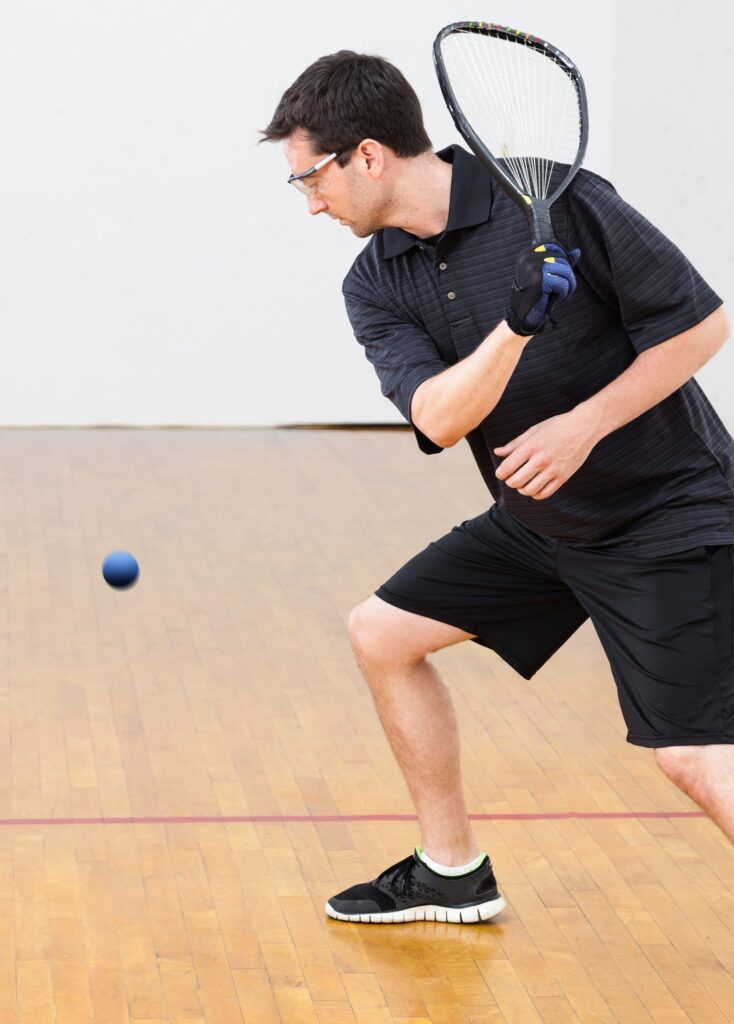
Online tutorials and video platforms are excellent learning tools, especially for those without access to in-person instruction.
YouTube channels and forums dedicated to racquetball offer step-by-step breakdowns of serves, positioning, and strategy. Watching skilled players can improve your understanding of ball angles, shot selection, and movement patterns inside the court.
Apps and tracking tools can add structure to your training. While racquetball isn’t typically tracked like running or cycling, fitness apps such as MapMyFitness or MyZone can help you monitor heart rate, duration, and calories burned during play. These insights are especially useful if you’re incorporating racquetball into a broader fitness routine.
Together, these resources give you everything you need to get started, stay safe, and continue improving, whether you’re playing casually at your local gym or setting personal goals to refine your game.
Safety and Tips
Warm up your shoulders, wrists, and legs before playing. Racquetball uses explosive, repetitive motions that rely heavily on the upper body and legs.
A few minutes of dynamic stretching and light mobility exercises can significantly reduce the risk of muscle strain or joint injury. Pay special attention to your shoulders and forearms, which are most engaged during rapid swings and serves.
Always wear protective eyewear. Racquetball is played in a confined court where the ball can travel at speeds exceeding 150 miles per hour, rebounding off multiple surfaces in unpredictable ways.
Shatter-resistant goggles specifically designed for racquetball are essential to prevent serious eye injuries.
Even experienced players wear them every time, they’re one of the simplest, most effective ways to stay safe on the court.
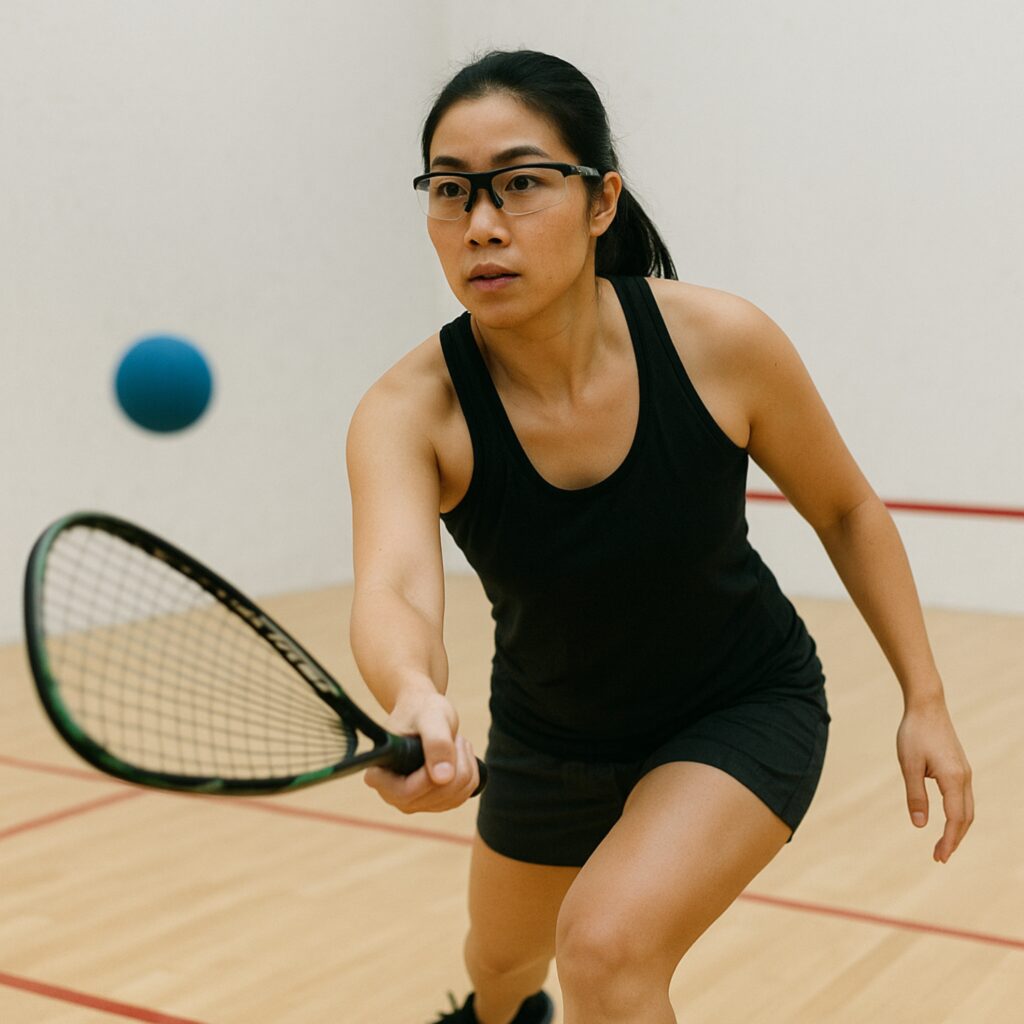
Stay hydrated and take breaks between games. The fast pace of racquetball can make it easy to overlook hydration, but continuous movement in an enclosed space can quickly lead to fatigue. Bring a water bottle to the court and take short breaks between games to maintain endurance and focus. Staying hydrated supports reaction time and helps prevent dizziness or cramping during play.
Communicate with your opponent to avoid collisions. Because both players share a small space and often move quickly toward the same areas of the court, communication is key.
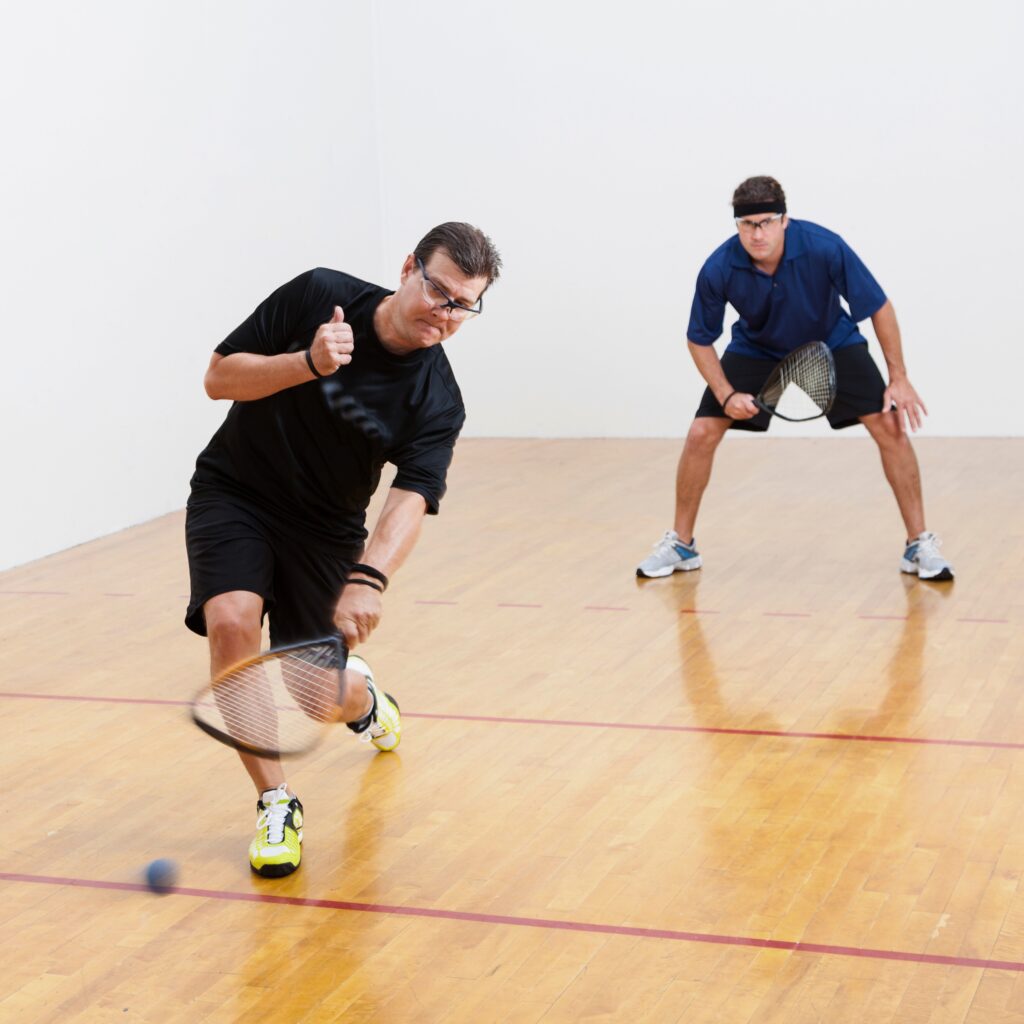
Call “yours” or “mine” before approaching the ball, and always give your opponent space when they are in position to hit. Awareness and respect prevent accidental contact and keep the game flowing smoothly.
Focus on control over power. Many new players try to win rallies by hitting the ball as hard as possible, but accuracy and placement are far more effective.
Aim for consistent serves and controlled angles rather than sheer force.
As your precision improves, you’ll spend less energy while gaining strategic advantage over your opponent.
Pay attention to your surroundings and footing. The court’s smooth surface can become slippery from dust or moisture, especially near the walls.
Wipe your shoes and racquet handle between games if needed, and avoid sudden lunges or twisting motions that could strain knees or ankles. Good traction and balanced movement are key to staying safe while maintaining control.
Respect the rules and play within your limits. Every court has guidelines for play and etiquette, follow them closely to ensure fairness and safety for everyone.
If you’re just getting started, keep sessions short and focus on form before increasing intensity.

Overexertion early on can lead to unnecessary strain or injury. Cool down after your match. After an intense session, take a few minutes to stretch your legs, shoulders, and lower back. Cooling down helps your muscles recover and prevents stiffness the next day. Even just a brief walk or light stretching routine can make a noticeable difference in how you feel afterward.
Final Thoughts
Racquetball is more than just a workout, it’s a test of focus, agility, and awareness that challenges both body and mind. Each rally demands movement, strategy, and adaptability, turning every match into a balance of quick thinking and precise control. It’s the kind of game that keeps you present, where concentration takes over and the outside world fades for a while.
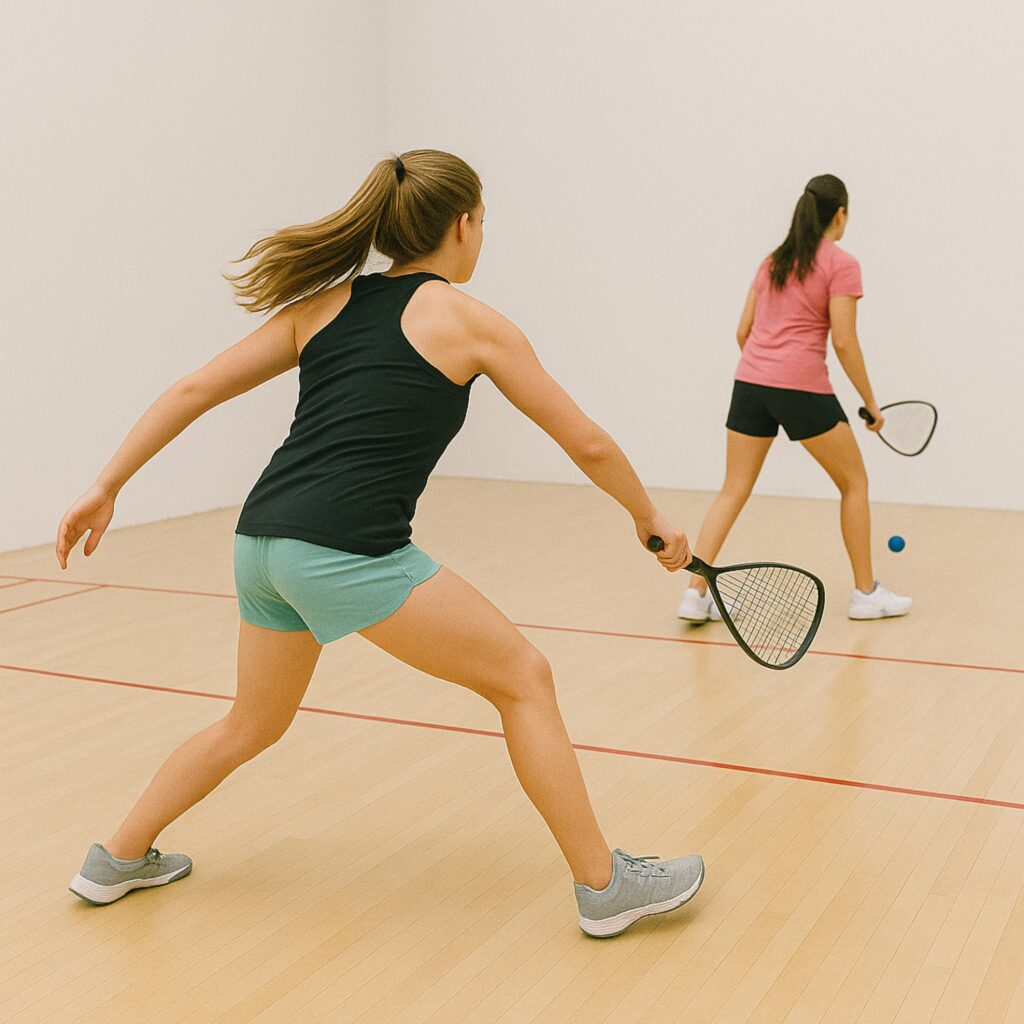
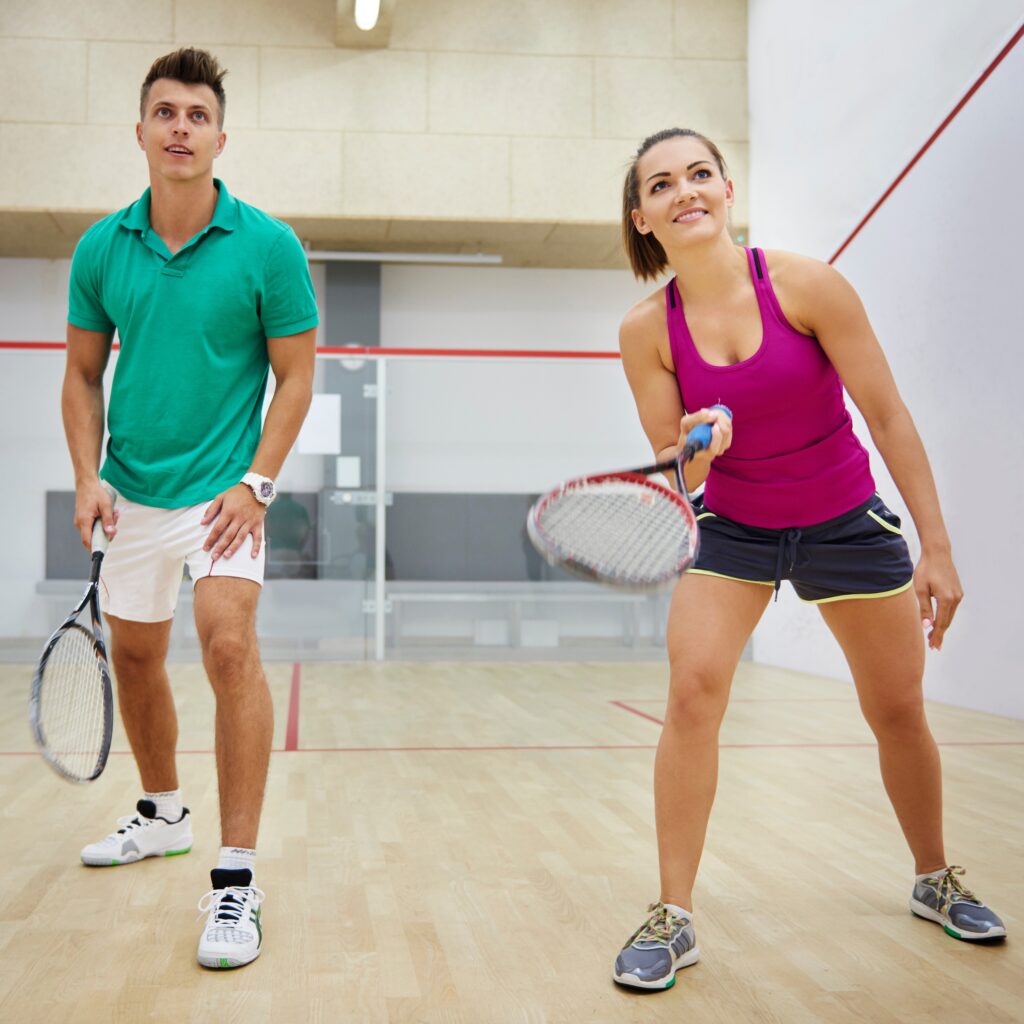
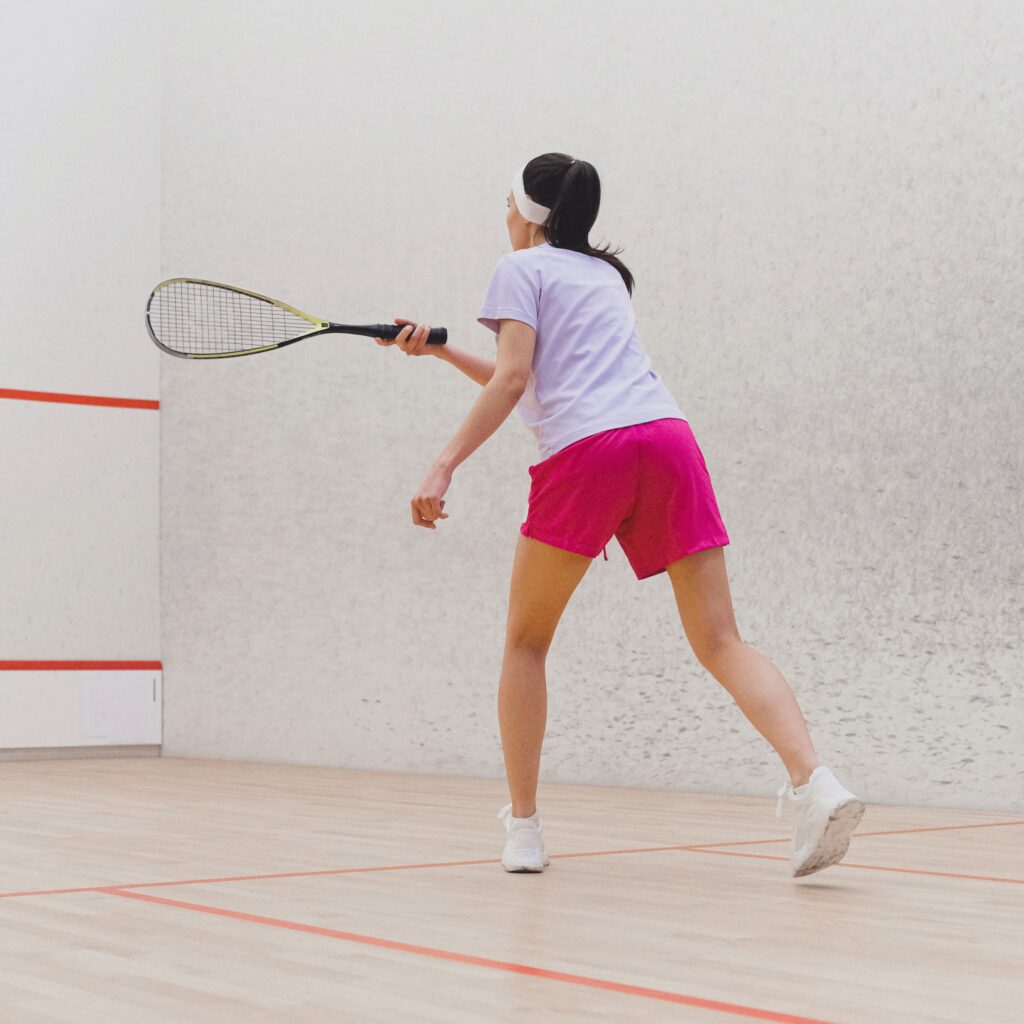
Beyond the physical challenge, racquetball offers a rush of focus and momentum. The echo in the court, the snap of each shot, and the drive to react faster all bring you into a rhythm that feels fast, fluid, and full of life. Staying active here isn’t about pace—it’s about presence.
So grab a racquet, step onto the court, and see what happens when you chase the bounce. You might discover that in the speed of the game, there’s room to find your own spark of focus, confidence, and joy.
Have you ever played racquetball, or is it something you’d like to try? Share your experience below!
Leave a Reply